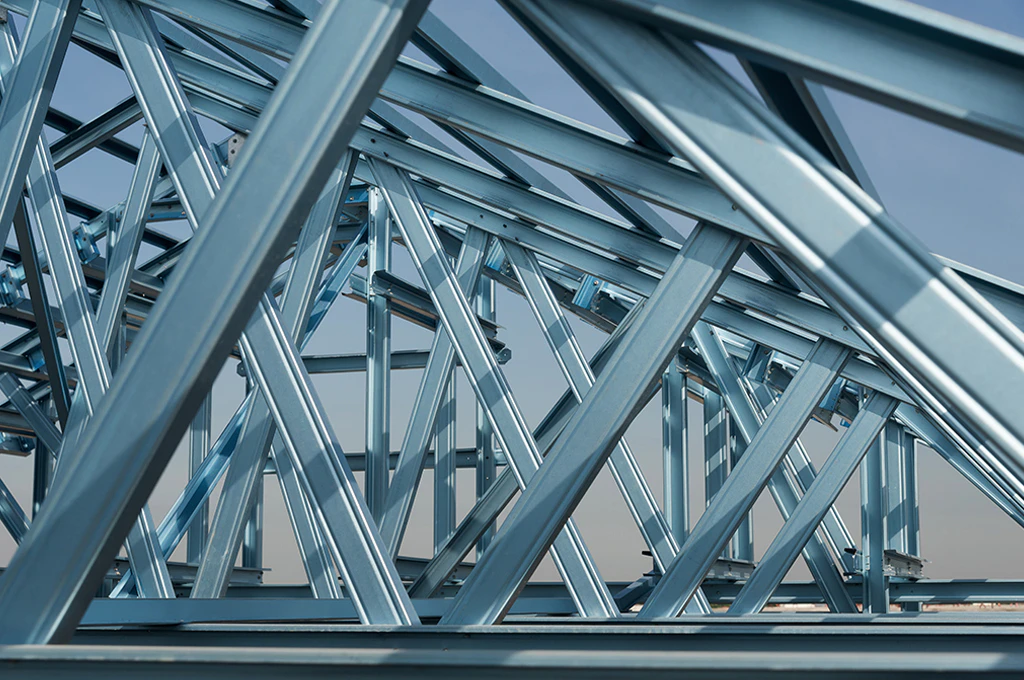We benefit from metal and its advantages in many areas. Known as a reliable, durable and long-lasting material, some processes are required to give these properties to the metal. One of them is the application of galvanization.
What is Galvanization?
Galvanization is a method used to prevent metals from being damaged by external factors and to delay corrosion. In this method, metals are coated with zinc, so that the metal material is protected from adverse conditions such as rust.
The history of the method dates back to the 18th century. This method, which was first applied by the Italian physicist Luigi Galvani, has the same name as its inventor. Thanks to this technique, which has been used in the metal industry for centuries, materials can be made more durable with less cost.
How is Galvanized Processed?
The metal to be protected is dipped into zinc, which is melted at an average of 455 degrees, and the metal is galvanized. During the bath, the molten zinc forms a strong bond with the metal and creates an extra layer.
While applying this method, three different stages are passed. You can review these stages and the steps they involve from the list below:
* Surface preparation
In the surface preparation stage, steps such as annealing, degreasing, chemical cleaning, washing, fluxing and drying are applied according to the type of galvanization. Then, the transition to the galvanizing process is made.
* Galvanizing
The metal is coated with zinc at this stage. You can find detailed information about galvanizing types and features in the continuation of our article. After the process is finished, it is time to check the metal coated with zinc.
* Getting Out of the Bath
First of all, the metal is rinsed and when removed from the bath, it is peeled off to obtain a smooth appearance. Then the metal drying process is started. At this stage, the metal can be cooled in media such as water, oil or air. As a fourth option, cold water can be poured into the metal part and allowed to dry in this way. The dried part is now ready for storage and waiting for use.
Galvanized Coating Types
There are two different options when making a galvanized bath: Hot or electro coating. Let's take a closer look at these methods and examine their advantages and disadvantages.
Hot Dipped
It is a classic technique among galvanizing methods. The bath method we mentioned in this article is used to indicate the hot dip technique. The metal material is dipped into the molten zinc at an average of 455 degrees, and the zinc forms a protective layer against corrosion. Usually alloy zinc is used.
After hot dipping, the life of the metal is extended by 30-40 years. It does not require extra care during this time. One of the disadvantages of this method is that it is no longer possible to weld the galvanized metal.
Electro Coating
In this alternative, zinc is adhered to the metal with the help of electrolytes instead of a zinc bath. Unlike the hot attack method, metal material can still be welded. In addition, since pure zinc is used instead of alloy, a higher quality work is obtained. The integrity of the zinc coating on the material does not deteriorate and does not lift.
How to Paint Galvanized Products?
It is very difficult to paint galvanized and keep the paint intact for a long time. The different nature of paint and galvanization differentiates the response of the two to external conditions, and eventually the galvanized surface removes the paint. The following steps can be followed for better adhesion of the paint:
1. Cleaning the surface by degreasing
2. Galvanized coating with a suitable method
3. Painting
On Which Metals Can Galvanized Coating Be Applied?
Galvanizing can be easily applied to iron and steel. In addition, aluminum riveted materials, brass and bronzes cannot be subjected to this process. Since the basis of the galvanizing method is based on the adhesion of zinc to the metal, it can only be applied to materials containing sufficient metal. In addition, since pure iron cannot form a strong bond with zinc, iron must contain an alloy.

- Homepage
- Corporate
- Services
- Our Products
- Knowledge Center
- Contact
- Get Offer
- Weight Calculation
- Steel Quality Equivalence
- Sheet Quality Specification
Bunları Arıyor Olabilirsin
Yükleniyor...
 Türkçe
Türkçe
 العربية
العربية





